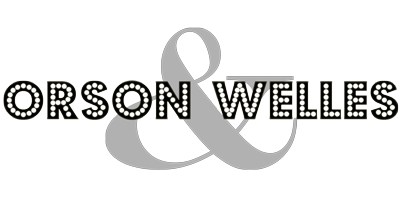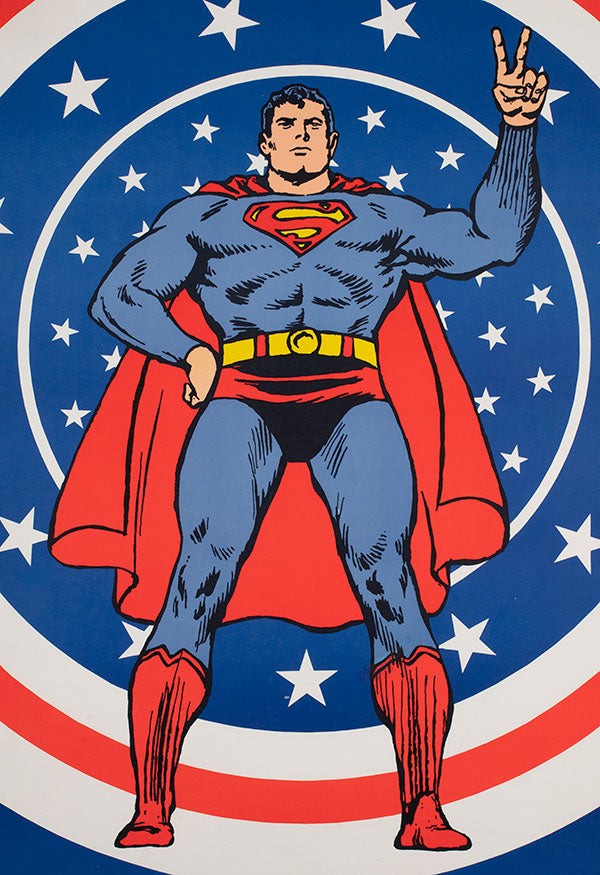Your Cart is Empty
How to Authenticate Vintage Movie Posters: The Ultimate Collector’s Guide
Vintage movie posters are highly collectible pieces of film history — but the rise of high-quality reproductions makes authentication essential. This guide explains reliable checks to confirm an original theatrical print and avoid costly mistakes.
What Makes a Film Poster “Original”
Authentic theatrical film posters were printed for movie theaters or other promotional purposes, not for retail sale. Prior to the 1980s, studios rented posters to cinemas and required returns after the run. On many of the American posters you will see words to that effect printed on the bottom with a statement similar to the one below...
NSS Statement:
Property of National Screen Service Corp. Licensed for display only in connection with the exhibition of this picture at your theater. Must be returned immediately thereafter
Property of National Screen Service Corp. Licensed for display only in connection with the exhibition of this picture at your theater. Must be returned immediately thereafter
As such, signs of use like fold lines, pinholes, and handling wear are common and can support authenticity.
If a pre-1980 poster is perfectly flat or rolled and mint, investigate carefully before buying.
Confirm Size and Format Standards
We tend to refer to the sizes of posters in inches. Original posters follow regional standards. Some examples of typical sizes are below...
| Region | Format | Standard Size |
|---|---|---|
| United States | One-Sheet | 27×41 in. (pre-1985), 27×40 in. (post-1985) |
| United States | Half-Sheet | 22×28 in. |
| United Kingdom | Quad | 30×40 in. |
| France | Grande | 47×63 in. |
| Italy | Locandina | 13×27 in. |
However, it is not uncommon for original film posters to deviate a little from the typical standards but noticeable deviations often indicate a reproduction or commercial reprint.

Also, should a poster appear to be authentic but is slightly smaller then check that it has not been trimmed. The value of a poster that has been trimmed is vastly reduced.
Inspect Printing Techniques
Originals were produced using era-appropriate methods:
- Stone/offset lithography: Soft, layered dot patterns with blended edges.
- Screen printing: Bold, solid color fields.
- Offset presses: Minor registration drift may be visible at edges.
Digital reproductions often show pixelation under magnification, hyper-glossy photo paper, or colours that appear unnaturally sharp or slightly 'off'. Images are often cropped slightly or appear with fewer details.
Evaluate Paper Quality & Texture
Paper stock is a powerful indicator of age. Pre-1980 U.S. one-sheets were generally thin and matte, typically folded for shipment. Later posters moved to heavier, glossier stock and were more often shipped rolled.
- Vintage paper may show mild yellowing, fiber irregularities, or tiny impurities when held to light.
- Modern fakes often use thick, bright-white photo paper or heavyweight art stock that feels “wrong.”
Being able to Identify the "right" type of paper really comes from many years experience of handling posters. Each country tends to have its own type of paper and feel, for example French paper is typically quite thin, "soft" and fragile.
Look for Studio Marks & Production Codes
Many originals include identifiers such as NSS numbers (U.S., pre-1984), printer’s marks, union labels, copyright lines, printer info, and revision codes. Missing or incorrect markings are major red flags.
Check Fold Lines & Ageing Characteristics
Factory folds were standard for shipments prior to the mid-1980s. Look for evenly aligned folds with natural wear along the creases and edges. Uniform or “too perfect” distressing can signal artificial aging. Posters can also be linen-backed to address the folds.
It is rare to find genuine pre-1980s film posters unfolded, however some, whether taken directly from printers or from studios, managed to escape being folded. Such examples, being scarce, command higher prices.
Compare Against Trusted References
Cross-check with reputable dealers and known originals. Small changes to taglines, ratings boxes, or billing blocks often distinguish reissues from first prints.
High-risk titles
Extra caution is required when shopping for popular titles and genres such as Star Wars, James Bond, Casablanca, Jaws and Classic Universal Monsters (e.g. Dracula, Frankenstein) as commercial posters were widely reproduced for these titles and are often sold as original film posters.
Aside from commercial reproductions, known fakes have been created and sold as originals by some notorious, unscrupulous dealers. Some have gone so far as to use the original NSS printing plates to create convincing fakes, identifiable only from the smallest of "tells".
Buy from or seek advice from reputable dealers like Orson & Welles or reliable autions houses like Bonhams or Sotheby's.

First Release vs later Re-Releases
Aside from reproductions and outright "fakes", buyers should be wary of posters from a film's re-release being sold as from its initital first release. Typically a first-year-of-release poster is far more valuable than a later re-release poster. All too often we see people incorrectly, whether by accident or with intent, say a poster is first release when it is a later re-release. An example being the From Russia With Love French Grande where the first release is worth four times its later re-releases.

Ready to add authenticated pieces to your collection? Shop Original Movie Posters - all of the posters we sell at Orson & Welles are guaranteed original and come with a Certificate of Authenticity.
FAQ:
What size should an original U.S. one-sheet be?
Pre-1985 one-sheets are typically 27×41 inches and were factory-folded. Post-1985 one-sheets are generally 27×40 inches and shipped rolled. For other film poster sizes check out our poster sizes faq.
How can I tell if a poster is a reproduction?
Watch for mismatched dimensions, glossy photo paper, pixelation from digital sources, missing studio marks (e.g., NSS), and a lack of era-appropriate folds. Ensure the paper and print quality is good and if in doubt seek advice from a reputable dealer.
Do fold lines reduce value?
For pre-1980 posters, folds are normal shipping artifacts and can support authenticity. However, a genuine rolled poster is more valuable than a folded one. Overall condition and rarity matter most. Fold lines can also be addressed with Conservation linen-backing.
Should I get professional authentication?
Yes—especially for key titles. Expert verification adds confidence, provenance, and insurance value.


